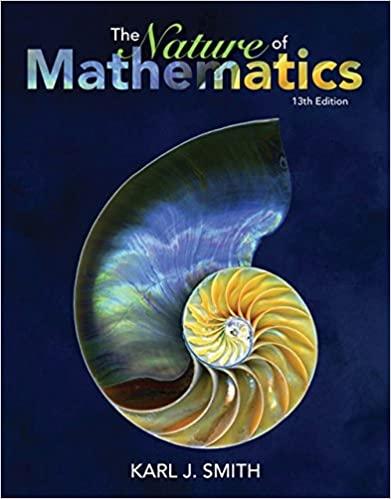Question
Lesson 2 INTERNAL INFLUENCES ON CONSUMER BEHAVIOR Unit 1 Perception Overview This unit describes the process of perception; the way we absorb and
Lesson 2 – INTERNAL INFLUENCES ON CONSUMER BEHAVIOR
Unit 1 – Perception
Overview
This unit describes the process of perception; the way we absorb and interpret information
about products and other people from the outside world.
Learning Objectives
• The design of a product often is a key driver of its success or failure.
• Products and commercial messages often appeal to our senses, but because of the profusion of these messages we don’t notice most of them.
• Perception is a three-stage process that translates raw stimuli into meaning.
• Subliminal advertising is a controversial—but largely ineffective—way to talk to consumers.
• We interpret the stimuli to which we do pay attention according to learned patterns and expectations.
• The field of semiotics helps us to understand how marketers use symbols to create meaning.
Course materials
The design of a product often is a key driver of its success or failure.
In recent years, the sensory experiences we receive from products and services have become a high priority when we choose among competing options. Consumers increasingly
want to buy things that will give them hedonic value in addition to functional value. They often believe that most brands perform similarly, so they weigh a product’s aesthetic qualities heavily when they select a brand.
Products and commercial messages often appeal to our senses, but because of the profusion of these messages we don’t notice most of them.
Marketing stimuli have important sensory qualities. We rely on colors, odors, sounds, tastes, and even the “feel” of products when we evaluate them. Not all sensations successfully make their way through the perceptual process. Many stimuli compete for our attention, and we don’t notice or accurately interpret the majority of them.
Perception is a three-stage process that translates raw stimuli into meaning.
7
Perception is the process by which physical sensations, such as sights, sounds, and smells, are selected, organized, and interpreted. The eventual interpretation of a stimulus allows it to be assigned meaning. A perceptual map is a widely used marketing tool that evaluates the relative standing of competing brands along relevant dimensions.
Subliminal advertising is a controversial—but largely ineffective—way to talk to consumers.
So-called subliminal persuasion and related techniques that expose people to visual and aural messages below the sensory threshold are controversial. Although evidence that subliminal persuasion is effective is virtually nonexistent, many consumers continue to believe that advertisers use this technique. Some of the factors that determine which stimuli (above the threshold level) do get perceived include the amount of exposure to the stimulus, how much attention it generates, and how it is interpreted. In an increasingly crowded stimulus environment, advertising clutter occurs when too many marketing-related messages compete for attention.
We interpret the stimuli to which we do pay attention according to learned patterns and expectations.
We don’t attend to a stimulus in isolation. We classify and organize it according to principles of perceptual organization. A Gestalt, or overall pattern, guides these principles. Specific grouping principles include closure, similarity, and figure-ground relationships. The final step in the process of perception is interpretation. Symbols help us make sense of the world by providing us with an interpretation of a stimulus that others often share. The degree to which the symbolism is consistent with our previous experience affects the meaning we assign to related objects.
The field of semiotics helps us to understand how marketers use symbols to create meaning.
Marketers try to communicate with consumers by creating relationships between their products or services and desired attributes. A semiotic analysis involves the correspondence between stimuli and the meaning of signs. The intended meaning may be literal (e.g., an icon such as a street sign with a picture of children playing). Or it may be indexical if it relies on shared characteristics (e.g., the red in a stop sign means danger). Meaning also can be conveyed by a symbol in which an image is given meaning by convention or by agreement of members of a society (e.g., stop signs are octagonal, whereas yield signs are triangular). Marketer-created associations often take on lives of their own as consumers begin to believe that hype is, in fact, real. We call this condition hyperreality.
Read:
8
Chapter 3 – Perception
Consumer Behavior 12e
by: Michael R. Solomon
Activities/assessment:
Answer the following Review Questions:
1. Define hedonic consumption and provide an example.
2. How does the sense of touch influence consumers’ reactions to products?
3. Identify and describe the three stages of perception.
4. Why is Weber’s Law a challenge for green marketers?
5. Does subliminal perception work? Why or why not?
6. Compare and contrast perceptual vigilance and perceptual defense.
7. “The whole is greater than the sum of its parts.” Explain this statement.
8. How do you identify a product’s object, sign (or symbol), and interpretant?
9. What do we mean by the concept of augmented reality? Give an example that is not discussed in the chapter. How does this concept differ from virtual reality?
10. How does semiotics help marketers understand consumer behavior?
Step by Step Solution
There are 3 Steps involved in it
Step: 1

Get Instant Access with AI-Powered Solutions
See step-by-step solutions with expert insights and AI powered tools for academic success
Step: 2

Step: 3

Ace Your Homework with AI
Get the answers you need in no time with our AI-driven, step-by-step assistance
Get Started


